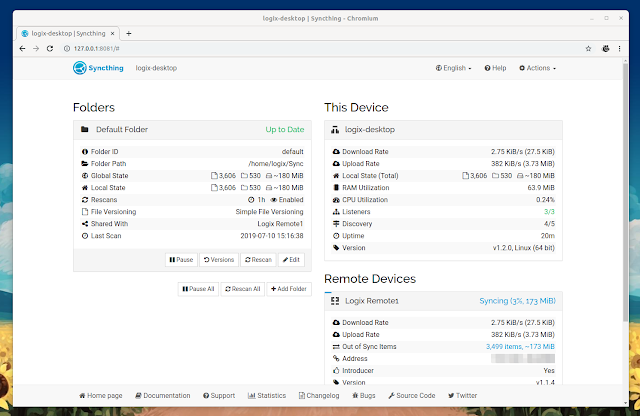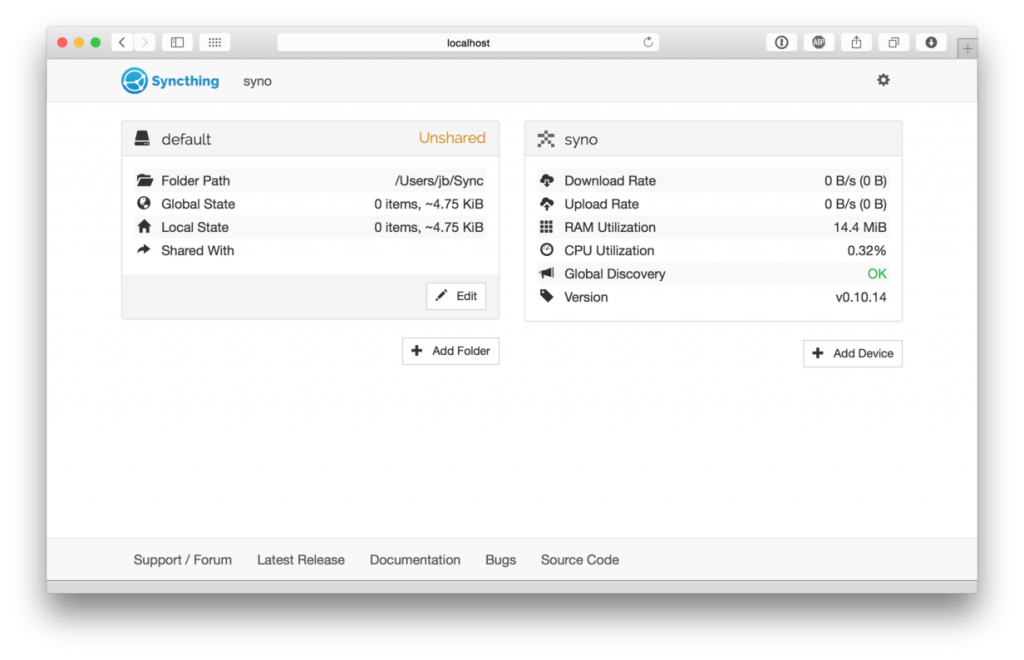

- #Syncthing tutorial how to
- #Syncthing tutorial install
- #Syncthing tutorial update
- #Syncthing tutorial for android
sudo systemctl restart will now be able to access the web interface provided by Syncthing. To apply the changes, restart the Syncthing service. 2.- Configuring Syncthing before using it You can put the IP address of the server or the value 0.0.0.0.0. cp config.xml Īnd in the section and specifically in the directive is the address you have to modify. Before editing it, it is a good idea to back it up. config.xml which is where all the Syncthing configuration is. config/syncthing/ folder which is where the main configuration of the application is.
#Syncthing tutorial install
This is because by default Syncthing is set up for local connections, but if you install it on a VPS or virtual machine then we have to play around with the configuration. If you have installed Syncthing on a server then the above address will not work. This way, Syncthing is installed and you can access the web interface from. sudo systemctl start to replace angelo with your usernameĪfter this, it is recommended to check the status of the service with the following command sudo systemctl status will see an output similar to this 1.- Syncthing service status However, unlike other services, we have to specify our user in the command in the following way sudo systemctl enable my case, the command would be sudo systemctl enable start the service so that Syncthing can work. This way we won’t have to start it manually with every reboot and we will avoid data loss because of this. When the application is correctly installed, then we have to start it and make it run with the system. Sudo apt install syncthing Working with the Syncthing service
#Syncthing tutorial update
Refresh APT and finally install the application by running sudo apt update Now add the repository to the system echo "deb syncthing stable" | sudo tee /etc/apt//syncthing.list Next, add the GPG key sudo curl -s -o /usr/share/keyrings/syncthing-archive-keyring.gpg Then install some necessary packages sudo apt install curl gnupg apt-transport-https So, open a terminal or in an SSH session, make sure to update the distribution completely. On the official site of the application, we find the instructions to add the APT repository that we can use for Ubuntu 20.04. So, let’s go for it and install it on Ubuntu 20.04 Install Syncthing on Ubuntu 20.04
#Syncthing tutorial for android
This device can be a computer but also mobile because Syncthing is available for Android and other systems like macOS or Windows. What we have to do is to add devices through an ID that we have to copy on the other device. Moreover, the application as such is open source and we can examine its source code on Github so there will be no surprises with possible backdoors.īeing a very powerful tool it is quite simple to use. In addition to this, Syncthing uses open source technology so we can be sure of its robustness. So this guarantees that the devices are explicitly added by us. Now how is the identification of each device? well, every device is identified by a strong cryptographic certificate. Another reason why the application is secure is that all communication is secured using TLS. Syncthing boasts of being private and secure and this is because none of your data is ever stored anywhere else other than on your computers.

This comes in handy if we have a VPS where we can manage everything related to privacy. So as we have read we will be able to synchronize folders from different devices. It synchronizes files between two or more computers in real-time, safely protected from prying eyes. Syncthing is a continuous file synchronization program. So we are talking about a synchronization tool.
#Syncthing tutorial how to
In this post, you will learn how to install Syncthing on Ubuntu 20.04 This cool tool allows us on our server to have instant access to one or more folders on many devices.


 0 kommentar(er)
0 kommentar(er)
